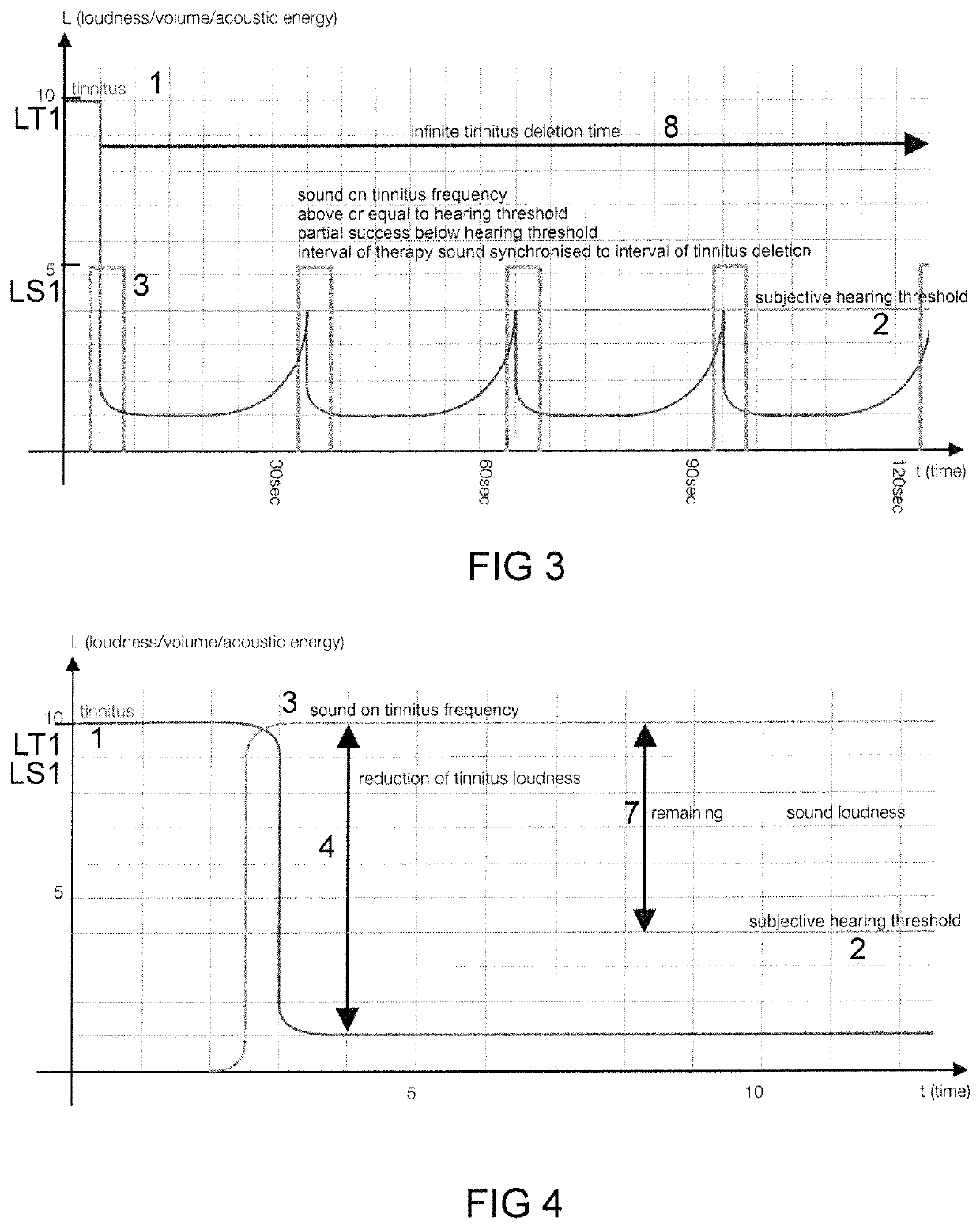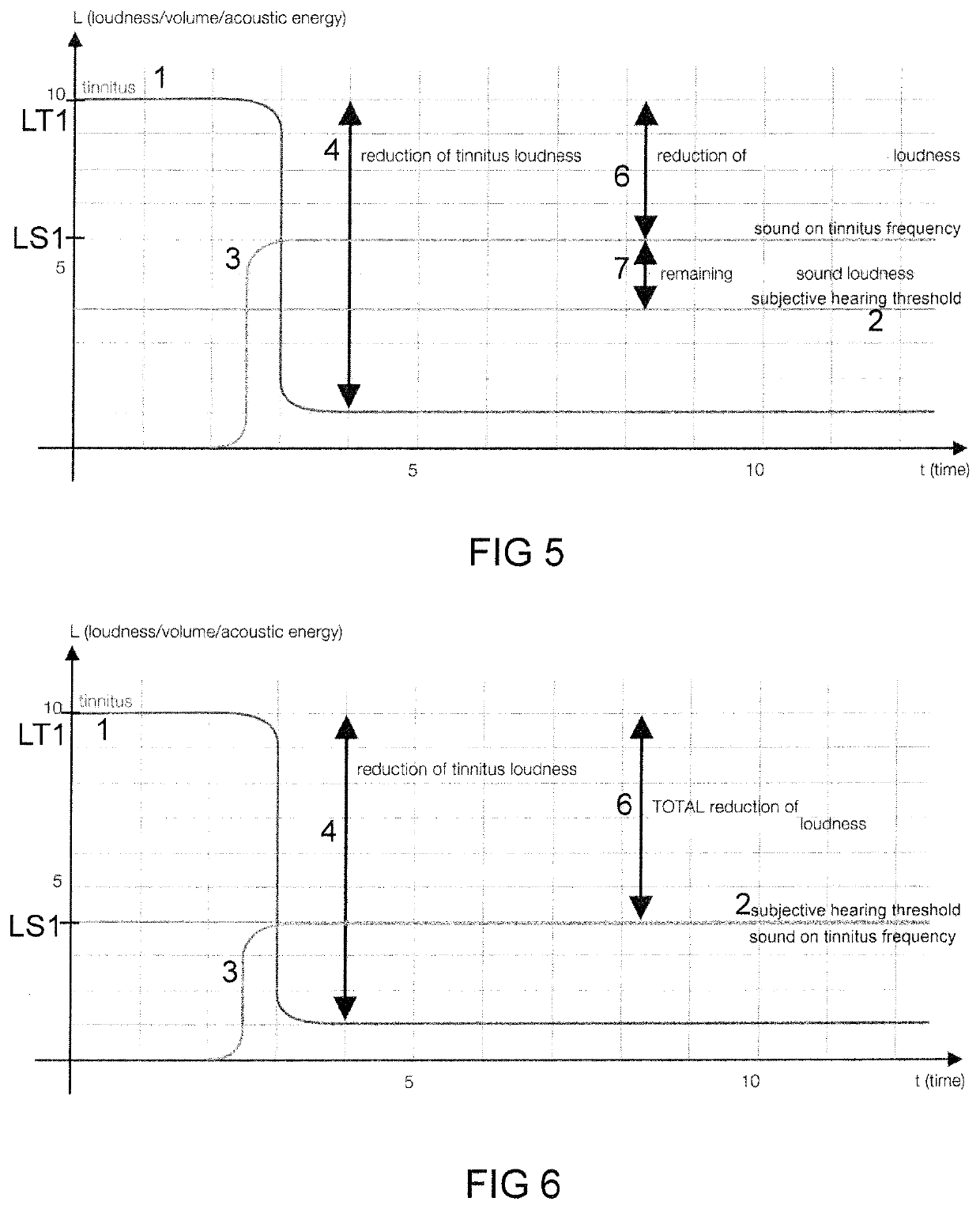Device for providing an audio signal
a technology for providing audio signals and devices, applied in electrical equipment, medical science, sensors, etc., can solve the problems of habituation to tinnitus, tinnitus is still not fully understood, and there is no known cure for tinnitus, so as to limit the output loudness and suppress the tinnitus
- Summary
- Abstract
- Description
- Claims
- Application Information
AI Technical Summary
Benefits of technology
Problems solved by technology
Method used
Image
Examples
Embodiment Construction
[0137]Similar or relating components in the figures are provided with the same reference numerals. A “sound” may be understood as an audio signal or a sensation of such in general. “Playing a sound” to the user may be achieved in different ways, e.g. as usually by generating acoustic waves that are transmitted to the user's ear via air, or by creating the acoustic waves directly in the user's hearing via an implant, or by creating a sensation of the sound directly in the user's brain.
[0138]FIG. 1 shows a time diagram of an empiric finding of tinnitus deletion by a sound underlying a device and a method according to the subsequent figures. In FIG. 1 and in similar diagrams, the axis of abscissae indicates time t in arbitrary units or in seconds s, and the axis of ordinates indicates loudness L or an equivalent physical quantity such as volume or acoustic energy. A first line represents the course of a perception of the tinnitus 1 of a user over time. A second line shows a subjective ...
PUM
 Login to View More
Login to View More Abstract
Description
Claims
Application Information
 Login to View More
Login to View More - R&D
- Intellectual Property
- Life Sciences
- Materials
- Tech Scout
- Unparalleled Data Quality
- Higher Quality Content
- 60% Fewer Hallucinations
Browse by: Latest US Patents, China's latest patents, Technical Efficacy Thesaurus, Application Domain, Technology Topic, Popular Technical Reports.
© 2025 PatSnap. All rights reserved.Legal|Privacy policy|Modern Slavery Act Transparency Statement|Sitemap|About US| Contact US: help@patsnap.com



